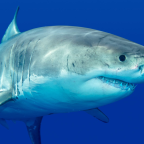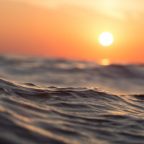
North Atlantic right whales had a banner year for breeding and several lucky escapes from perilous entanglements.
The endangered whales gave birth to 39 calves, breaking the modern record of 31 set in the 2000-01 calving season. Several of the mother-calf pairs passed by the Space Coast this past spring.
“They had an awesome year,” said Julie Albert, who runs a volunteer right whale monitoring network for the nonprofit Marine Resources Council in Palm Bay.
The Marine Resources Council keeps watch off the coast for whales each winter and spring.
Since 1994, hundreds have reported whale sightings that warn harbor pilots and captains to beware, especially in waters near Port Canaveral. The ships and whales share the same travel routes.
Right whales also saw a record five “entanglements,” when they swam through fishing gear during their winter and spring migration. One incident was the first time ever that biologists were able to inject a right whale with a sedative in the open sea and then disentangle the animal.
All of the tangled-up whales either were freed or were expected to shed the fishing gear on their own after biologists intervened, Albert said.
Right whales haven’t always been so lucky. Whalers dubbed them the “right” whale to hunt, because of the animal’s high oil content and because of their inclination to swim slowly and close to shore.
By the 1850s, American had become the pre-eminent whaling nation, primarily by targeting right whales and humpback whales.
Biologists estimate only about 400 right whales remain.
And modern-day threats have emerged from lobster trap lines, ship strikes and, most recently, from a looming Navy undersea training range off Jacksonville.
The estimated $100 million Undersea Warfare Training Range would be about 660 square miles, and include the path that right whales take on their annual trek from New England to bear young in the warmer waters from Georgia to Sebastian Inlet.
The sonar systems used emit sound up to 235 decibels, approaching levels used by the Navy during an exercise in the Bahamas in 2000 suspected of causing 16 whales to beach themselves.
Environmental groups say run-ins with right whales would be unavoidable and that the range could go elsewhere, far from such prime calving grounds.
But Navy Commander Curtis Stubbs of Fleet Area Control and Surveillance Facility at Naval Air Station Jacksonville — responsible for the airspace off the coast from Charleston, S.C., to Port Canaveral — said the whales would be safe.
“What I’m most proud of is our northern right whale efforts,” he said during an Oct. 7 public hearing in Jacksonville.
“For the past 10 years, my sailors have engaged in tracking and identifying the northern right whales as they migrate south,” he added. “It is not uncommon to move an entire exercise away from areas where these whales are transiting. We’ve been part of the solution for the northern right whale.”












Social Profiles